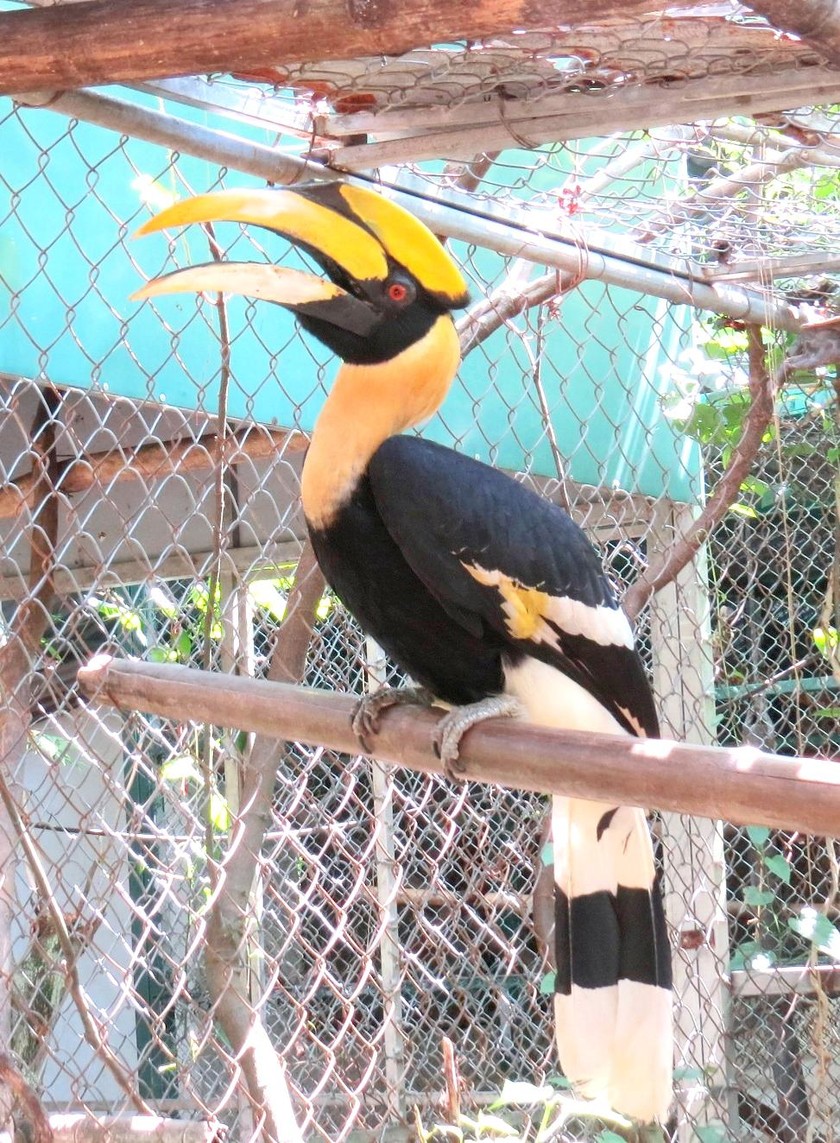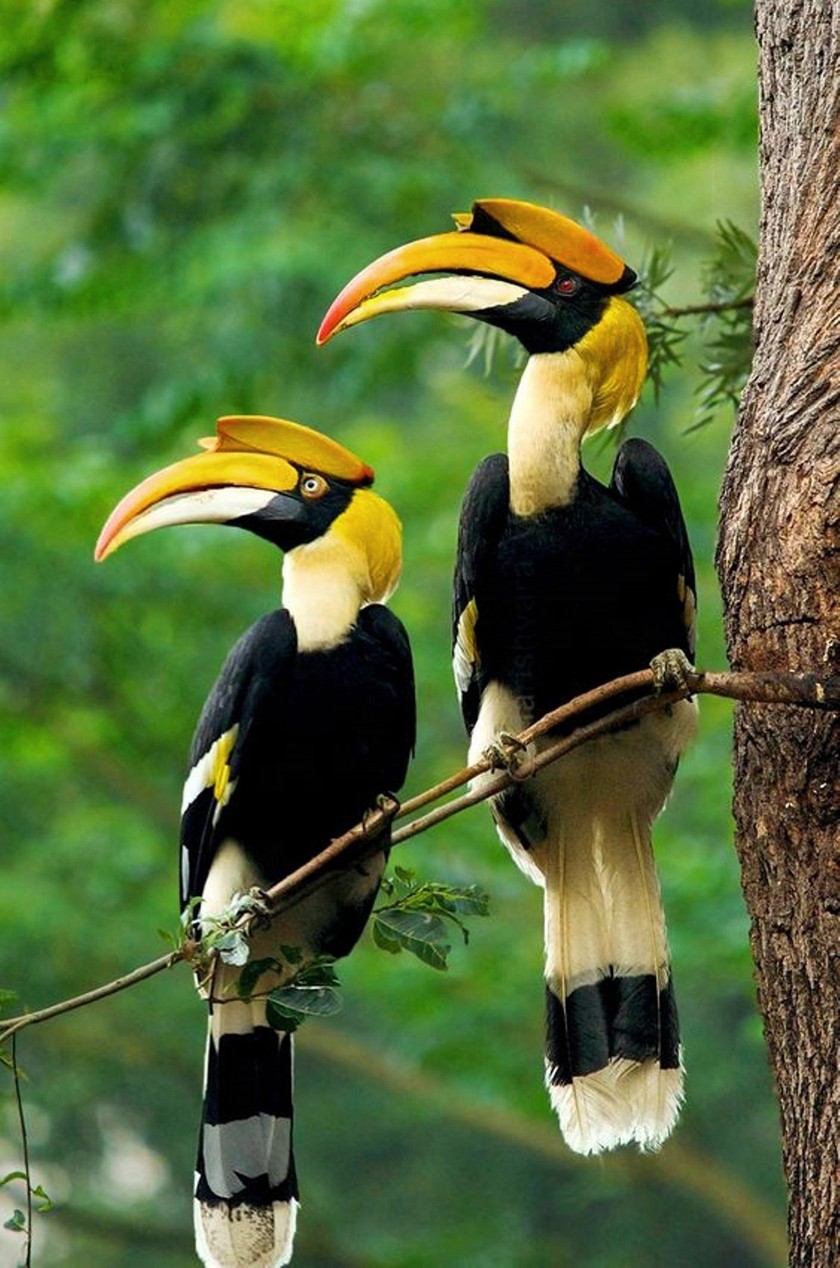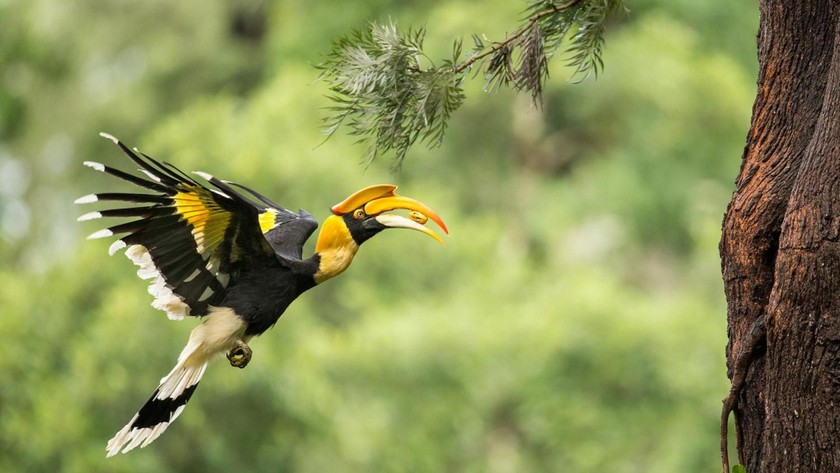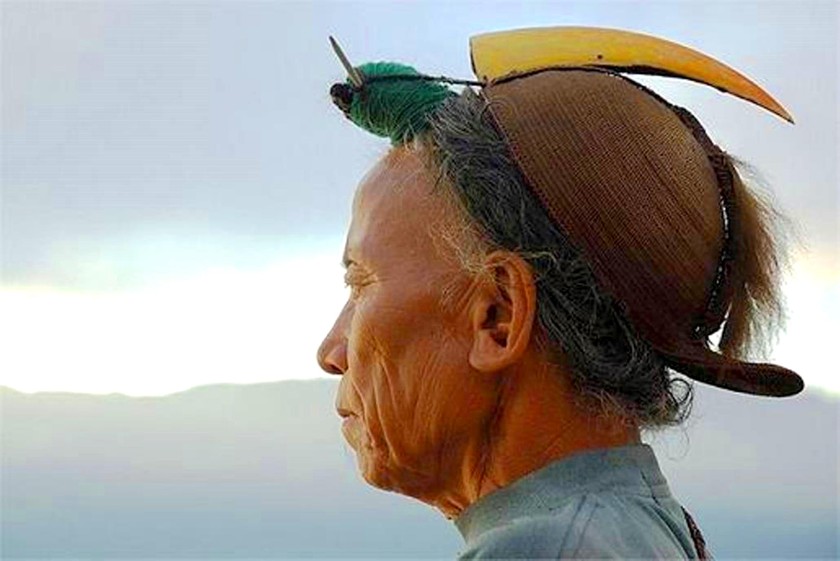Receive information that the Center for Rescue, Conservation and Development of Organisms (CH, BT&PTSV), under the Phong Nha - Ke Bang National Park Management Board, Quang Binh province is rescuing and caring for 3 individual birds. In order to release the hornbill back into the wild, we came to see it. The authorities of this province discovered these 3 individuals being kept in captivity among the population and mobilized to hand them over to the Center.
 |
An immature male Hornbill is being cared for and rescued at Phong Nha - Ke Bang National Park. |
Captivating, legendary beauty
According to information introduced from this Center, Hornbill also has another name: Earth Phoenix (scientific name is Buceros bicornis). They live in large jungles with threatened numbers in India, southern China and some Southeast Asian countries, including Vietnam. Few birds have a lifespan as long as the Hornbill, reaching 50 years in good living conditions.
This bird is the largest member of the Hornbill family. Adult individuals can be from 0.95 - 1.2m long with a wingspan as wide as 1.52m long and weigh from 2.15 - 4kg. In particular, the shape of the Hornbill "captures" all eyes with its beautiful plumage and black and bright yellow beak and hat on top of its head. This beak makes up 11% of the bird's body weight. This cap and beak block is hollow with keratin or keratin (fibrous protein) extending from the upper part of the beak to the skull.
Mr. Tran Ngoc Anh - Deputy Director of the Phong Nha - Ke Bang Center for Conservation, Conservation and Development of Animals introduced: "Researchers have not yet determined the purpose of that massive mine, although it is believed that it is result of sexual selection. From the survey, the female Hornbill is smaller than the male and its irises are blue instead of bright red like the male. Male hornbills often spend a lot of leisure time during the day carefully preening their feathers to apply lubricant to the primary wing feathers and beak to make the yellow color brighter as they age.
The plumage of adult Hornbills is luxurious and stands out in the green forest, blending with 3 main colors: white, pure black and bright yellow. Its large size and impressive colors have contributed to making this bird a part of the culture and rituals of some tribes in India and some Southeast Asian countries. It is believed that, with legendary beauty, the Hornbill is the embodiment of supreme power in the deep forest.
 |
Pair of Hornbills in the wild. |
Know how to give "proposal" gifts, say no to adultery
If the loyal nature of the Hornbill ranked second, no one would find the first bird. Many biologists call this the most romantic bird in the world. Choosing their mate is an extremely dramatic process. The newly mature male bird will soon choose a cute partner, then will diligently give many gifts until the "lover" accepts. For a female Hornbill, the best partner is the "bird" who gives her many of her favorite gifts such as tree branches, dead animals or even... bones.
The hornbill is a bird with a warm heart and is very loyal. They will not change partners throughout their lives and are very devoted and devoted to their families, working together to raise their chicks. This bird has a great belief in love. From the first day until death, they live very happily in love and never betray.
The female hornbill chooses a nesting place in hollow holes in the trunks of the tallest trees in the forest. The nest's mouth is covered with a layer of mud, leaves, and small twigs, leaving only a small hole to transfer food. Before sealing the mouth, the mother bird was in the "tree cave", laid 1 - 2 eggs and locked herself in the nest for 3 - 4 months to incubate the eggs and take care of the adults. The source of food to feed the whole family during this time will be completely taken care of by the male bird, who is diligent and tireless with dozens of trips to search for food to bring back to the nest every day.
 |
Image of a Hornbill flying in nature. |
After the chicks mature, the mother Hornbill will decide to peck away the mud layer. The barrier is removed, and the mother and baby birds will be reunited with the father bird. Although they live in flocks of 20 - 40 individuals, Hornbills will only form monogamous pairs. If an unfortunate accident happens to their partner, the remaining Hornbill individual will suffer loneliness. It is no different from the ancient legend of To Thi turning to stone. People found on a few tree trunks, female birds and baby birds had dried up when the male Hornbill stopped coming back...
Three times more expensive than… ivory
Because of the beauty and living habits of the Hornbill, some tribes in the deep forest pose a threat to their survival. They hunt aggressively for a number of different bird parts. The blood of young birds is believed to have a comforting effect on the souls of the dead. Before the wedding, men of some Indian tribes use the colorful feathers of the Hornbill to make headdresses, expressing their promise of fidelity. Bird heads are used as decorations.
 |
A tribal man in Asia with a headdress decorated with a hornbill beak. |
Deputy Director of Phong Nha - Ke Bang Center for Conservation, Conservation and Development of Animals gave sad information: "Currently, the trade in Hornbill beaks and horns continues underground in a way that is difficult to control due to its value of more than 6,000 VND." USD/kg - about 3 times more expensive than ivory. The slaughter of elephants and rhinos for ivory and horn is gradually being controlled, but the fate of the Hornbill species is seriously threatened because it has not been given proper protection and attention.
Due to habitat loss and hunting, the Hornbill is considered near (near) endangered in the International Union for Conservation of Nature's (IUCN) Red List of Endangered Species. This is also a bird species listed in Appendix I of CITES (Convention on International Trade in Endangered Species of Wild Fauna and Flora).
Also according to Mr. Anh, although their presence has been recorded in many places in Vietnam, there has not been any truly thorough investigation or survey of the number of Hornbill individuals. In the primeval forests of Phong Nha - Ke Bang, rangers and conservation workers encounter the frequent appearance of flying birds emitting their noises and colorful colors against the sky. Currently, the Center for Conservation, Conservation and Development of this National Park is researching a project and developing a program to call for the conservation and development of this special and rare near-endangered bird species.
In nature, the Hornbill's food is mainly fruits and seeds. Occasionally they eat small mammals, lizards, snakes and insects. Hornbills have long been considered one of the most effective seed sowers in the Asian rainforest, the "farmers of the forests".
The Hornbill's hat and beak are used by Chinese craftsmen to create highly valuable carved works of art. Japanese artisans have also been discovered carving this precious bird's horn beak with many sophisticated images into men's Kimono belt knobs. Many exquisite items made from bird horns also crossed the sea to distant England and became the fashion of the 19th century aristocrats.

